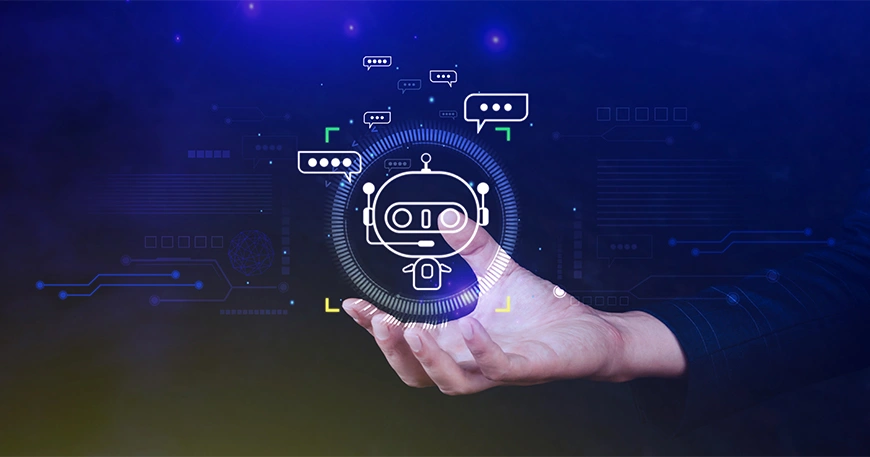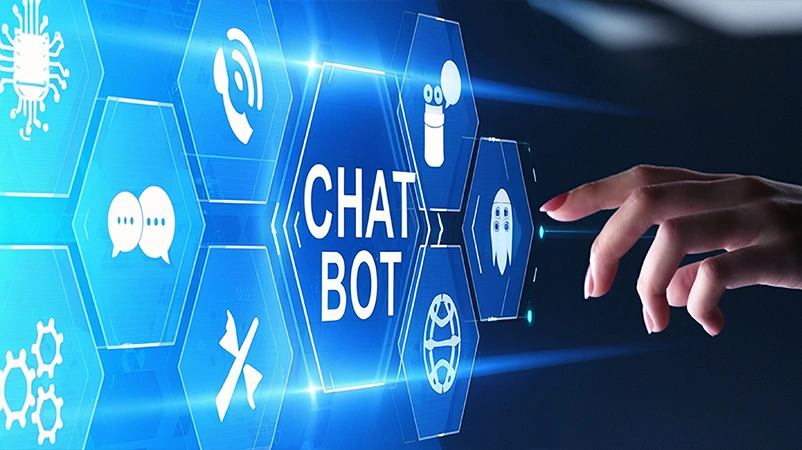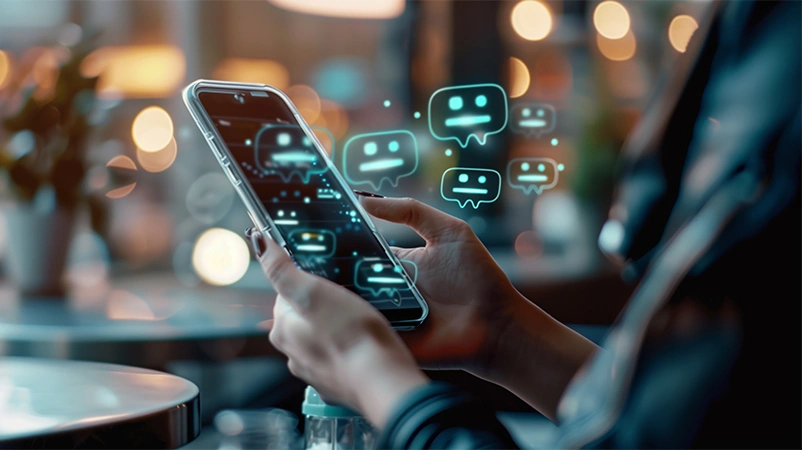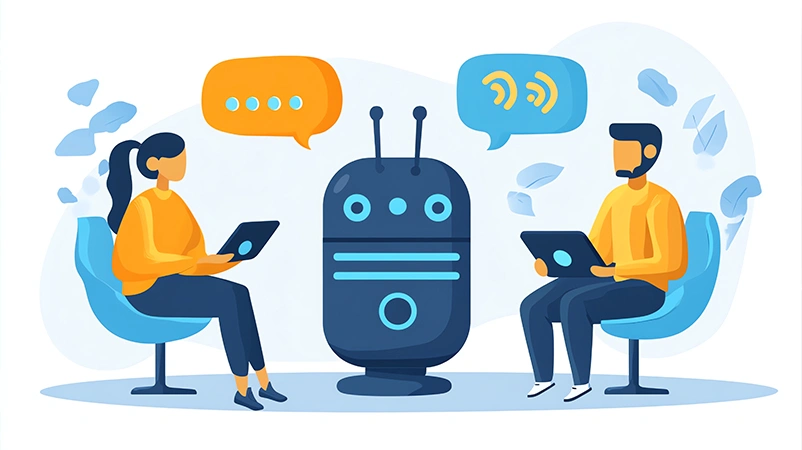In today’s digital-first world, communication has evolved far beyond traditional human-to-human interactions. Artificial Intelligence (AI) is at the heart of this transformation — enhancing the way individuals, businesses, and global communities connect. From AI-powered chatbots that handle customer service to real-time language translators that break linguistic barriers, intelligent communication systems are reshaping the way we share information and emotions.
This blog explores how AI-powered communication tools are redefining the modern landscape, why they matter, and what lies beyond chatbots and translators in the next phase of the AI revolution.
The Rise of AI in Communication
The world produces massive volumes of digital interactions every second — emails, messages, support chats, and voice calls. Managing and responding to this flow efficiently has become essential. That’s where AI steps in.
Artificial Intelligence in communication combines Natural Language Processing (NLP), Machine Learning (ML), and Generative AI to understand, interpret, and respond to human language in meaningful ways. Whether it’s detecting intent in customer queries or generating contextual responses, AI systems are making conversations more natural, faster, and smarter.
AI-driven communication tools not only reduce manual effort but also create seamless experiences across platforms — from business websites to social media messaging apps.

AI Chatbots: The New Face of Customer Interaction
Gone are the days of waiting endlessly for customer support replies. AI-powered chatbots have transformed the customer experience landscape by offering instant responses, 24/7 availability, and personalized engagement.
How AI Chatbots Work
Modern chatbots use advanced NLP algorithms to understand user queries, predict intent, and deliver accurate responses. Generative AI enables them to mimic natural human conversations rather than providing robotic or pre-scripted answers.
Benefits of AI Chatbots
24/7 Customer Support
AI chatbots can handle user queries anytime, anywhere.
Personalized Experiences
They learn from user behavior and offer tailored recommendations.
Scalability
Businesses can manage thousands of conversations simultaneously without additional manpower.
Data Insights
Chatbots collect interaction data that helps improve services and marketing strategies.
Companies like Amazon, Google, and small startups alike are leveraging chatbot technology to automate everything from product support to lead generation.
AI Translators: Breaking Down Language Barriers
Language has always been a barrier to global communication — but AI is rapidly changing that. AI translators such as Google Translate, DeepL, and Microsoft Translator use neural machine translation models that understand grammar, context, and emotion.
How AI Translation Works
Unlike traditional translation tools that use word-by-word conversion, AI translators employ contextual understanding through neural networks. This allows them to interpret idioms, cultural expressions, and tone with much higher accuracy.
Key Advantages of AI Translation Tools
Real-Time Multilingual Communication
Improved Accuracy
Voice Translation
Cross-Border Collaboration
AI-driven translation tools are essential for global businesses, international education, travel, and diplomacy — making the world more connected and inclusive.

Beyond Chatbots and Translators: The Future of AI Communication
While chatbots and translators are the most recognized AI communication tools today, the next generation of AI-driven communication goes beyond automation — towards emotional intelligence and context-aware interaction.
1. Emotionally Intelligent AI Assistants
Emerging AI systems can analyze tone, mood, and sentiment in real time. This means your digital assistant could soon detect frustration or happiness in your voice and respond empathetically — bridging the gap between human emotion and machine logic.
2. AI-Powered Virtual Meetings
AI is revolutionizing video conferencing by automatically transcribing conversations, summarizing key points, and even translating speech live. Tools like Zoom and Microsoft Teams already use AI to enhance collaboration and accessibility.
3. Smart Email and Communication Management
Generative AI tools now assist professionals by drafting, replying, and organizing emails intelligently. These systems understand priority levels, detect sentiment, and even recommend next steps.
4. Voice and Gesture Recognition
Advanced AI communication interfaces now recognize body language, gestures, and tone variations to provide more immersive and natural interaction. This opens up new possibilities in healthcare, education, and entertainment.
5. Multimodal AI Communication
The future of communication is multimodal — combining voice, text, and visual cues. Imagine an AI assistant that can read a facial expression, interpret a question, and respond with the right tone and visual aid.

AI Integration and Optimization for Businesses
For organizations, integrating AI-powered communication is no longer optional — it’s a competitive necessity. Businesses adopting AI integration optimization are able to automate operations, enhance customer relationships, and unlock data-driven insights.
Steps to Implement AI Communication Solutions
- Identify Use Cases: Start with customer service or multilingual communication.
- Choose the Right Tools: Pick chatbots or translation APIs that align with your business needs.
- Integrate Seamlessly: Connect AI tools with CRM, ERP, or website chat systems.
- Train and Customize: Personalize the models using historical data for better accuracy.
- Monitor and Improve: Continuously analyze interactions for optimization.
By following these steps, companies can create an AI-integrated communication ecosystem that boosts productivity and strengthens customer engagement.
The Human Element: Keeping Communication Authentic
Even with automation and machine learning advancements, one truth remains: communication is about connection. AI should enhance, not replace, the human touch.
Businesses must focus on designing AI communication systems that reflect empathy, trust, and understanding. When AI supports human intent rather than overrides it, communication becomes not just efficient but meaningful.
Conclusion
As we move toward a world of multimodal, context-driven, and emotionally intelligent communication, the future promises more seamless and personalized interactions — where humans and AI communicate as partners, not competitors.
In essence, AI-powered communication is not just about talking to machines — it’s about creating smarter ways to connect with each other.



